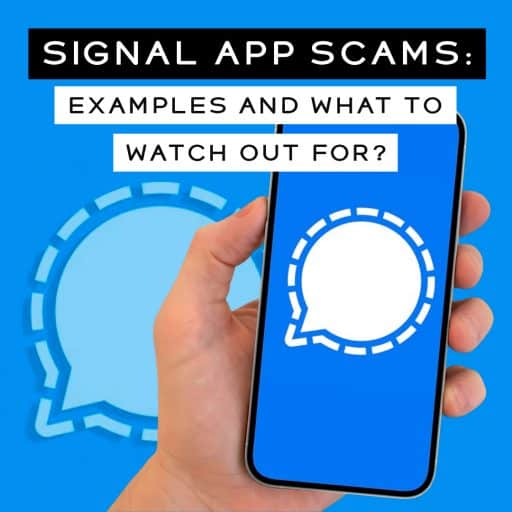On a day-to-day basis, you may receive several scam and spam correspondences. This can be from emails that bypass your spam folder and can get directly in front of you.
Calls or texts from unknown numbers may take over your phone several times a day with an area code matching yours. You may even receive voicemails from a prerecorded message or a real person.
In an increasingly digital world, scammers adapt their approach to exploit you or your company by constantly looking for weak points. Let’s dive into how you can get rid of scammers once and for all.
What Are the Common Scammer Tactics?
Humans have a long history of sketchy behavior dating back as far as 300 BCE to the first records of insurance fraud. A scammer’s true goal is to get money by means of deception, ransom, or theft. Before the internet, there were grey areas of door-to-door salespeople selling products that didn’t work quite as well as they made it seem or street corner three card monty scams.
With a digitally focused world and fewer people having cash on hand, scammers have gotten more creative and gone digital as well. Many scammer tactics use spoofing, a method of mimicking a telephone number, email address, or caller ID.
These spoofing methods try to add credibility to who they are to get their target to provide sensitive information. Spoofed numbers and email addresses can make it appear like a reputable company or government agency is contacting you.
Here are some of the most common scams in the age of the internet:
Phishing Scams
Phishing has become an increasingly dangerous issue, with more personalized phishing tactics resulting in 66% of all data breaches. A phishing email’s goal is to get the user to provide sensitive information by posing as a credible person or institution.
But this tactic can go beyond emails and come in the form of calls or texts sent from a familiar number or seemingly familiar caller ID. Common scams are those of someone spoofing, such as pretending to be a coworker or bank, asking for a code they triggered, or for you to provide personal details.
Charitable Organization Scams
Charity scams as a type of imposter scam where money is being collected for a legitimate cause. These scams are especially prevalent during unfortunate circumstances like natural disasters and times when aid is needed.
More people are willing to contribute by giving money to a cause because they can easily provide money to an organization that can use those funds to make a difference.
Ransomware Scams
Things being held for ransom is another old scam concept that has made its way to the internet era. A ransomware scam is where a scammer is able to block access to a person or company’s important data, requesting money in exchange for the release of those files.
While this can be a simple roadblock to your data that leaves it untouched once the ransom is collected, scammers can leverage the reputational damage of a breach.
What Can I Do if I’ve Been Scammed?
No matter the scammer’s methods, it’s important to follow some basic steps. Once a scammer has successfully been in contact with a target, you’ll want to:
- Stop All Contact: If a connection with a scammer has already begun, do not engage in other messages or calls. Take notes on the methods of contact and the number or address used for contact. It’s a great idea to keep records, take screenshots, and block the contact.
- Contact Financial Institutions: If information about a specific bank, card, or account was compromised, contact that institution. If you suspect there may have been a breach of your personal information, contact all three major credit bureaus so they can warn credit grantors that you may be a victim of identity theft.
- Change Passwords: If a specific account was breached, you’ll want to take the steps to reset your password. If that password is used for other accounts such as social media, credit card, banking, and email, you will want to change those accounts as well.
- Contact Authorities: Contact local law enforcement for issues of lost money and stolen property. The Federal Trade Commission can be used to report instances of fraud. Identitytheft.gov is a government site that can handle reports of fraudulent purchases and cases of identity theft.
Dealing With Scammers Once and for All
If you’re receiving constant contact from scam attempts, do not engage with them. The best course of action is to not reply or answer a call or text from an unknown number.
You may be urged to hold the line or egged into a response, but once a connection is made, the scam can begin. Following the steps above is a great way to deal with a scammer who has harassed you or potentially compromised your data.
For many, smartphones are now a stand-in for a computer, housing so much important information. Take the proper steps to protect your phone from malware.
But what about scammers who haven’t made successful contact but won’t leave you alone? In an instance of a scammer’s constant attempts, the best method is to ignore and block. If you receive calls or texts, you can easily block that number to avoid any correspondence.
There are many ways to block unwanted calls, whether you use a cell phone or a landline. Unsolicited emails can be marked to go straight to spam or straight to the trash can.
Keep Your Data Secure With Digital Forensics
Digital Forensics is a leading expert in data recovery, data acquisition, and cyber security services. We have performed digital forensics consulting for legal professionals, Fortune 500 companies, government entities, and private investigators.
We’re ready to help victims of online identity theft, data breaches, spyware, and ransomware attacks with our 24/7 support. We investigate issues thoroughly, document the matter, and put steps in place to prevent further data breaches or incidences.
Let us help you take control of your security by preventing fraud from ever happening and identifying potential weak points.
Sources:
Spear Phishing on the Rise | University of Florida
How To Block Unwanted Calls | FTC






